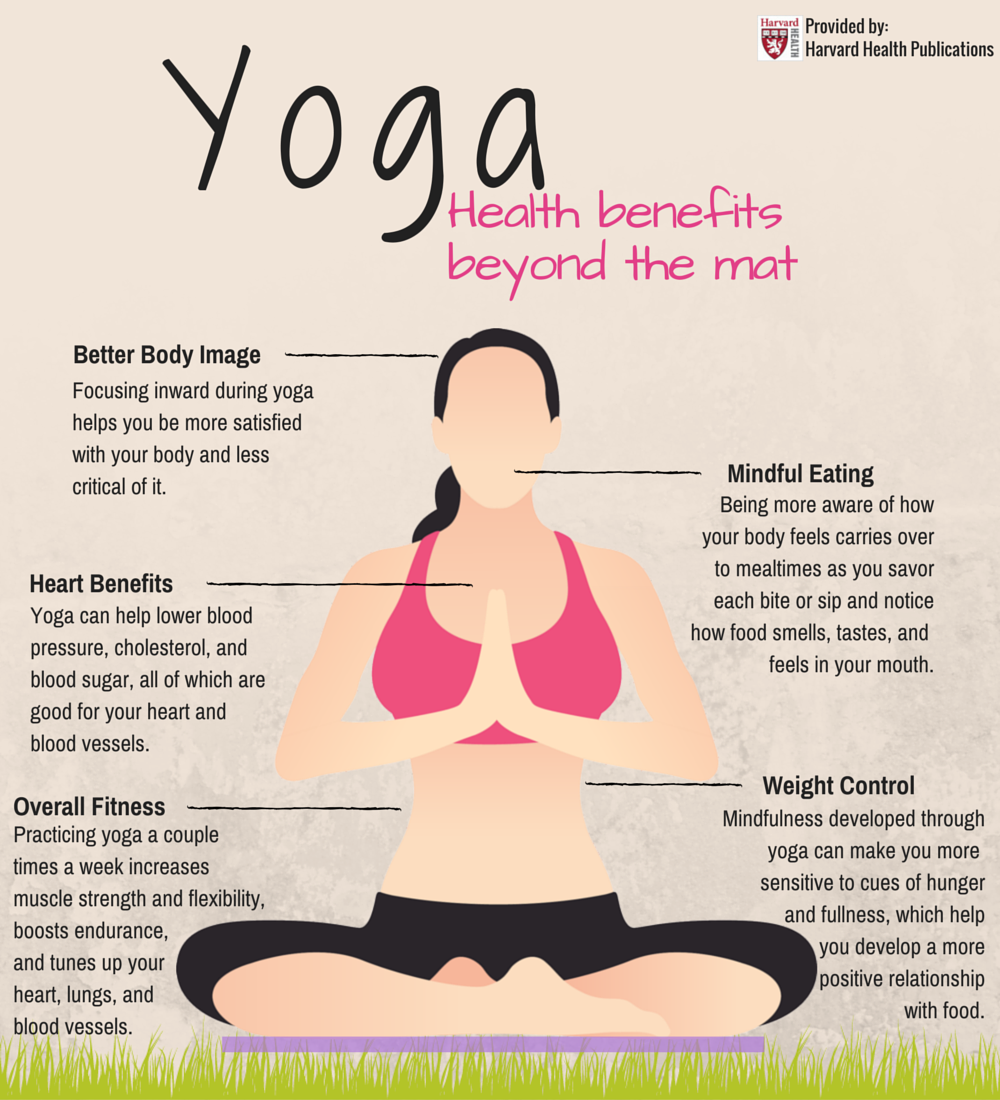
Yoga, which involves breathing and movement, can help lower blood sugar. It helps reduce stress and improve blood circulation. Yoga can be especially helpful for diabetics, as it can help improve the function of the pancreas and lower blood pressure. It has been proven to be beneficial to patients with high blood glucose levels. This is why it's highly recommended for people with diabetes.
It can be done at home and is considered safe. However, it is important to consult a doctor before starting a yoga program. Avoid high-impact yoga and fast-paced activities if you have diabetes. Avoid head stands and forward bends as these pose can increase blood pressure. Before performing any of these exercises, consult your doctor if diabetes is present.
Yoga is also helpful for diabetics to manage stress. Certain asanas may increase the ability of the pancreas to produce insulin. Yoga improves the ability of the pancreas to produce insulin and reduces obesity risk. Before you begin any yoga exercise, consult your doctor. Also, you can discuss the health benefits of yoga with your doctor to get guidance on how to choose the appropriate program.

Among the many other benefits of yoga for diabetics, one of the most beneficial poses is the ardha matsyendrasana, which massages the internal organs. Because it encourages insulin release, it can lower your risk of developing heart disease. It has been proven to lower the risk of developing diabetes and improve overall health. You should monitor your blood sugar level and take prescribed medication while you practice.
Yoga has many other benefits for diabetics. It improves blood circulation, and helps to regulate hormones. As a result, it can help people with diabetes manage stress. Stress management is essential for type 1 diabetes. Because of this, insulin production is reduced when the body feels stressed. But stress can make insulin production even more difficult.
Yoga not only has positive effects on the bodies, but it also lowers the risk of developing diabetes. By stretching the internal muscles, yoga improves efficiency, which results in an increase in insulin secretion. This is crucial for controlling blood sugar. It can also help reduce stress levels in people with diabetes and prediabetes. Yoga is not for everyone but it has been proven to be beneficial for those with diabetes.
Although yoga practice can help improve blood glucose levels there are certain limitations. Trials in yoga are often short, lacking adequate control groups and participants. These studies may not show all benefits of yoga. There are many factors that can influence the study's results. The most significant is the fact that the exercise helps the patient manage their stress, which in turn lowers the risk of diabetes.

There are many benefits to yoga. Although yoga is not aerobic, it can improve blood sugar levels and shrink the waistline, which are important for those with diabetes. It can reduce constipation and improve cardiovascular health. It can also promote a healthier mood and lower blood pressure. For diabetics, yoga is the best form medicine. It will give them the energy to live a healthy and happy life.
Yoga can also help with diabetes. It can be used to prevent diabetes-related neuropathy (which is nerve damage). People with diabetes may also benefit from it's ability to regulate blood sugar levels. In fact, it has been shown to improve the quality of life of people suffering from diabetes. Any exercise should only be performed under the supervision and guidance of a qualified professional.
FAQ
Does weightlifting burn more fat than other forms of exercise?
Weight lifting is a great way to burn fat faster but you need to do it together with cardio exercise.
For the best results of weightlifting, do it after cardio exercises.
If done correctly weightlifting can raise your heart rate, oxygen consumption and help you lose weight.
If you don't mix it with cardio, your body won't notice significant changes.
What is a good exercise routine?
You must exercise regularly to stay fit. It doesn't make a difference what kind of activity you choose. As long as you do it often, it will be beneficial. Consistency is the key. For you to get results, you have to stick with it for a longer period of time.
Begin by walking for a few minutes each day. Then gradually increase the time spent exercising until you spend 30 minutes a day working out. You could do this by running, swimming, weight training or yoga.
Try to make sure you exercise on all days of the week. If you have a reason to miss a session, don't skim it.
If you exercise outside, ensure that you wear appropriate clothing and footwear. You should also consider the weather conditions that could affect your ability exercise safely.
When you exercise, drink plenty of fluids. Avoid alcohol consumption during this time as it can lead to dehydration. Avoid caffeinated drinks, such as coffee, tea and cola. They will not only give you more energy but also dehydrate you.
When you first start exercising, you might feel tired after completing your workouts. However, if you continue with your program, you'll soon feel more energetic and refreshed.
How To Get Rid Of Belly Fat Fast?
There are several methods to rapidly reduce belly fat. One option is to eat less calories and drink more water.
You can also increase your metabolism through activities like running or swimming.
Avoid sitting down if your goal is to lose belly fat quickly. Instead, get up and move around throughout the day. This will help reduce calories.
If you are having trouble losing belly weight despite trying all of these methods, there is another way.
This is done by using a device called the belt. The belt fits around your waist and is tightened when you sit down.
As a result you'll feel uncomfortable and will be more mobile. This forces you to burn more calories and reduces your belly fat.
Are you a cardio-exercise fan?
Cardiovascular exercise can have many benefits. Cardiovascular exercise improves blood circulation and strengthens your heart muscle. It also increases stamina and helps you lose weight.
Cardiovascular exercise includes running, biking, hiking, swimming, tennis, basketball, soccer, volleyball, football, etc.
Cardio exercises should not be done at high intensity. This could lead to injury.
Only do the cardio exercise when you are feeling good.
Do not push yourself to the limit. In this way, you may injure or even kill yourself.
Begin by warming up before engaging in cardio exercise. Start slowly increasing your intensity.
Always listen to your body. If you feel pain when doing cardiovascular exercise, you should immediately stop.
It is also advisable to rest after a cardiovascular workout. This allows your muscles time to recover.
To lose weight, you should include cardiovascular exercise in your daily routine.
It is the most effective way to burn calories and reduce belly fat.
Which is the best order to exercise?
It all depends upon what you are trying to achieve. First, lift heavy weights if you are looking to increase muscle mass. Next, you can move onto cardio. You can then go to strength training if your goal is to lose weight.
Start with cardio if you only want to lose fat. You can then add strength training.
Do cardio first if you are looking to increase muscle mass. It stimulates growth hormones that help build muscle mass.
Eat before you go to the gym. This will fuel your muscles and make them work harder. This will make you feel better while working out.
Statistics
- An estimated calorie range for moderately active adult males falls between 2,200 to 2,800 calories per day, depending on age. (eatright.org)
- Are You One of the 20% of Guys (mh.co.za)
- The PRS enabled risk stratification for overall prostate cancer and lethal disease with a four-fold difference between men in the highest and lowest quartiles (HR, 4.32; 95% confidence interval [CI], 3.16-5.89). (pubmed.ncbi.nlm.nih.gov)
- Cardmembers earn 5% Back at Amazon.com with a Prime Credit Card. (amazon.com)
- By John Thompson Take a whopping 38% off a set of PowerBlock Pros. (menshealth.com)
External Links
How To
How does a man become fit in just 30 days?
Breaking down fitness goals into manageable steps will help you reach your fitness goals.
It is important to work towards your goal every day. This could mean doing 10 pushups every 5 minutes or running 3 km.
You will notice positive results if this is done consistently over time.
You must be consistent. Keep at it until success!
What is the main difference between Aerobic Fitness or Anaerobic Fitness
Anaerobic fitness refers to the ability of our bodies to perform intense physical work without oxygen. Anaerobic pathways are used to give our bodies enough energy to perform high-intensity exercise. Anaerobic pathways include glycolysis and creatine phosphate.
Aerobic fitness, on the other hand, is a sustained low-intensity exercise. While performing aerobic exercises, oxygen is used as the primary source of fuel for the cells. The aerobic pathway is more efficient than the anaerobic.
If you are looking to run a full marathon, then you have to increase your aerobic ability. You won't be successful if you focus only on your anaerobic ability.
Aerobic fitness also refers to cardiovascular fitness. The most common methods of determining cardiovascular fitness are step tests and VO2max testing.
VO2 Max Test
VO2max is the maximum oxygen (O2) that your body can use while exercising. This test measures the amount of O2 the body can utilize while exercising.
This is the best test to assess cardiovascular fitness. It requires expensive equipment and highly-trained professionals to administer.
Step Tests
Step tests are simple yet effective methods of measuring cardiovascular fitness. They involve walking or jogging on a treadmill or track for a certain duration based on your age and weight.
These tests cost little, are quick and simple to do, and can be carried out almost anywhere. For instance, you can walk on a treadmill for 2 minutes, rest for 1 minute, repeat this process for 20 minutes, and then stop. Throughout the entire session, your heartbeat should stay within a set range.
This method is known by the "Bruce Protocol". Bruce, a runner, developed this protocol after realizing that his heart rate did not rise when he ran longer distances.